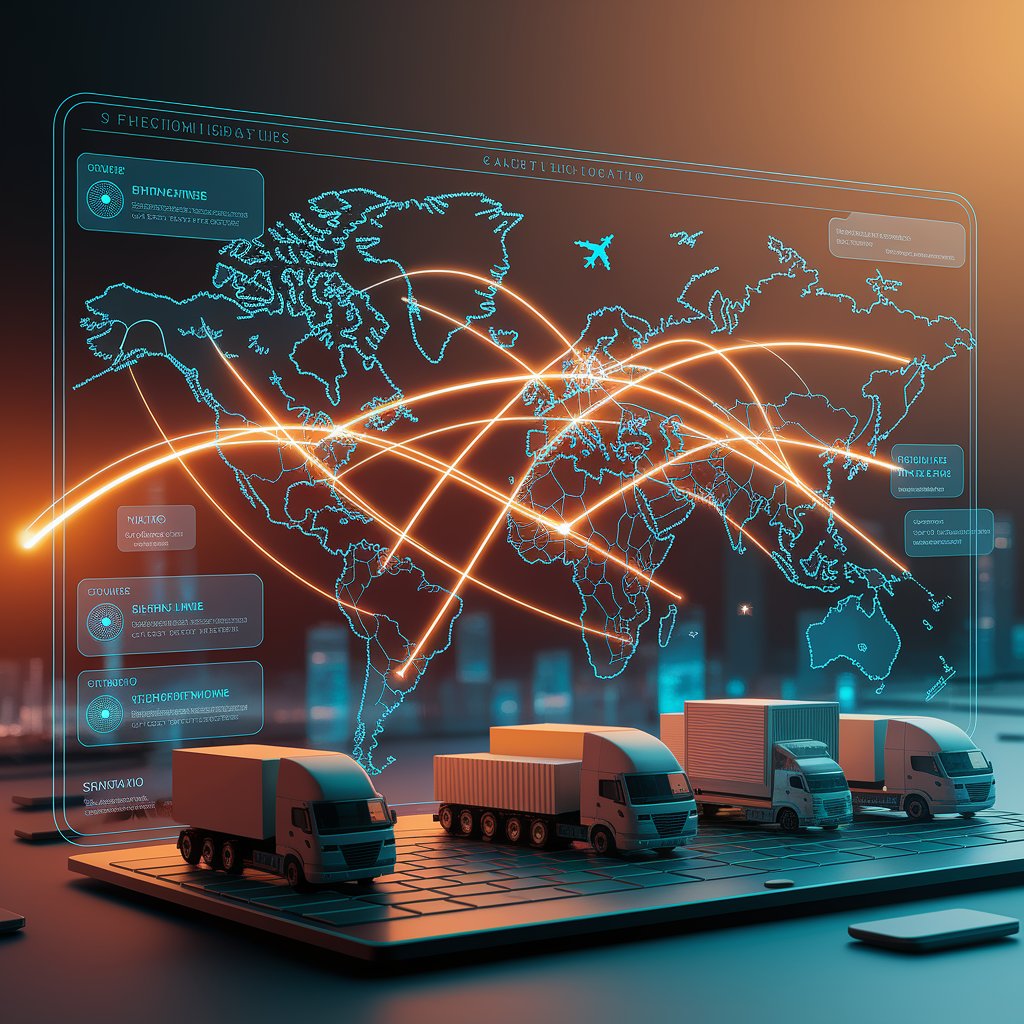AI Logistics Risk Management: Building Resilient Global Supply Chains

Introduction
That’s why companies are turning to AI logistics risk management. By combining predictive analytics, machine learning, and real-time monitoring, AI helps businesses detect risks before they happen, enabling proactive strategies that safeguard supply chains.
What Is AI Logistics Risk Management?
AI logistics risk management is the use of artificial intelligence to identify, analyze, and mitigate potential disruptions in supply chains. These platforms integrate data from ERP, TMS, WMS, IoT sensors, and external sources such as weather alerts, geopolitical news, and trade regulations.
Instead of responding to risks after they occur, AI enables proactive, data-driven decision-making that minimizes financial losses and operational downtime.

Key Features of AI Logistics Risk Management
- Predictive Analytics – Anticipate delays, shortages, and disruptions before they escalate.
- Real-Time Monitoring – Track shipments, fleets, and trade routes continuously.
- Scenario Simulation – Test “what-if” risk scenarios and prepare mitigation plans.
- Automated Alerts – Notify teams instantly of potential risks.
- Compliance & Security Tracking – Ensure shipments follow trade regulations.
- Integrated Risk Dashboards – Unified visibility into vulnerabilities across networks.
Benefits of AI Logistics Risk Management
- Risk Reduction – Minimize exposure to financial and operational losses.
- Faster Response – Act on risks before they impact supply chains.
- Cost Savings – Avoid penalties, fines, and inefficiencies caused by disruptions.
- Resilience – Strengthen supply chains against global volatility.
- Customer Trust – Provide consistent delivery despite external challenges.
- Sustainability – Predict and prevent wasteful logistics practices.

Real-World Applications
- Freight Forwarders – Use AI to forecast risks in carrier schedules.
- Carriers – Identify fleet vulnerabilities and maintenance needs in advance.
- E-commerce Logistics – Anticipate seasonal surges and prevent delivery failures.
- Cold Chain Providers – Monitor risks that could impact temperature-sensitive cargo.
- Global Shippers – Mitigate cross-border risks like customs delays or trade disputes.
Challenges in AI Logistics Risk Management
- Data Fragmentation – Disconnected systems lower prediction accuracy.
- Integration Complexity – Legacy ERP/TMS platforms require upgrades.
- Cybersecurity Risks – AI systems handling sensitive trade data must be secured.
- High Initial Investment – AI adoption requires capital and expertise.
- Resistance to Change – Teams may hesitate to trust AI-driven risk models.

Best Practices for Success
- Focus on High-Risk Areas First – Apply AI to the most vulnerable routes or cargo types.
- Unify Data Sources – Integrate ERP, WMS, TMS, and external data feeds.
- Leverage Scenario Simulations – Prepare strategies for different disruption types.
- Balance AI and Human Oversight – Combine machine-driven alerts with planner expertise.
- Invest in Cybersecurity – Protect AI systems from potential digital threats.
- Measure ROI – Track avoided costs, downtime reductions, and improved resilience.
The Future of AI Logistics Risk Management
- Autonomous Risk Engines – AI systems making real-time mitigation decisions.
- Blockchain-Backed Risk Monitoring – Secure, transparent risk data sharing.
- Digital Twin Risk Models – Virtual replicas of supply chains for testing vulnerabilities.
- Edge AI for Instant Alerts – Localized risk detection at warehouses and ports.
- Sustainability Risk Tracking – AI predicting ESG-related vulnerabilities.
Conclusion
AI logistics risk management is reshaping how companies approach global disruptions. By predicting risks, automating responses, and strengthening resilience, AI helps logistics providers, carriers, and shippers minimize losses and maintain reliable operations.
For businesses navigating today’s unpredictable supply chain environment, isn’t just a smart move—it’s essential for long-term success.
